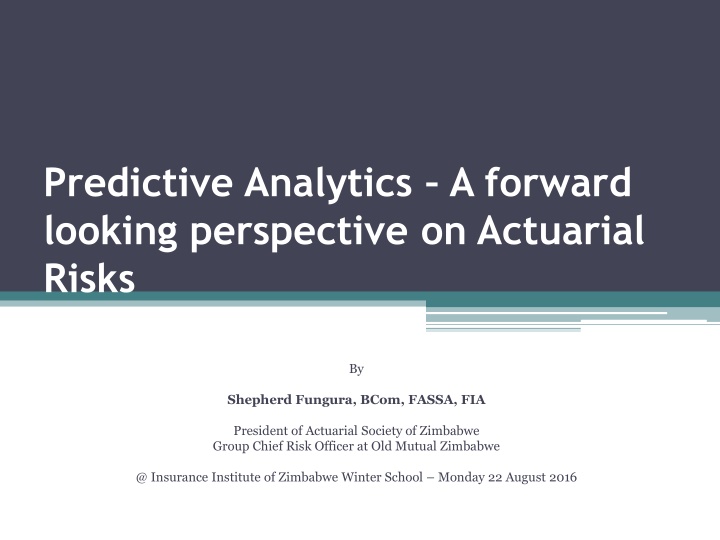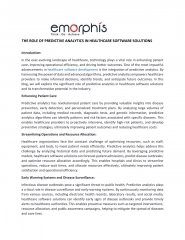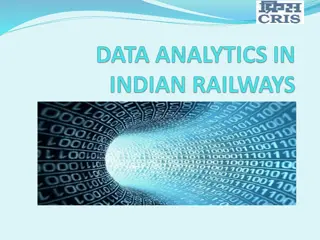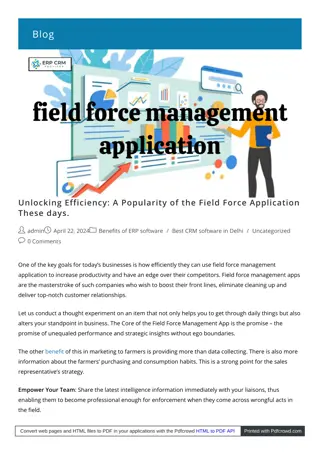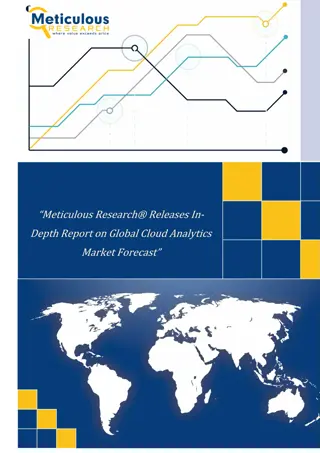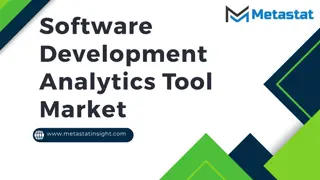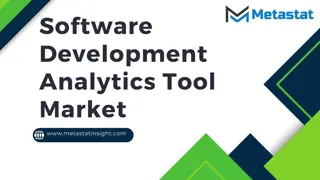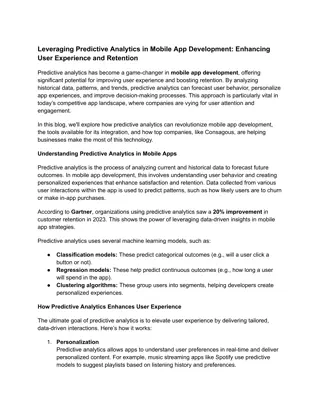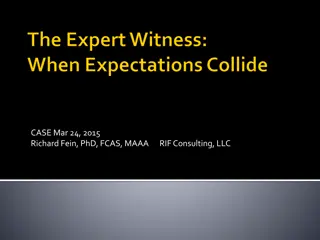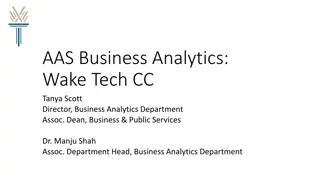Predictive Analytics: A Forward-Looking Perspective on Actuarial Risks
Explore the forward-looking perspective on actuarial risks with Shepherd Fungura as he discusses the application of predictive analytics in understanding future risks. Gain insights on leveraging data to mitigate uncertainties and make informed decisions in the realm of actuarial science.
Download Presentation

Please find below an Image/Link to download the presentation.
The content on the website is provided AS IS for your information and personal use only. It may not be sold, licensed, or shared on other websites without obtaining consent from the author.If you encounter any issues during the download, it is possible that the publisher has removed the file from their server.
You are allowed to download the files provided on this website for personal or commercial use, subject to the condition that they are used lawfully. All files are the property of their respective owners.
The content on the website is provided AS IS for your information and personal use only. It may not be sold, licensed, or shared on other websites without obtaining consent from the author.
E N D
Presentation Transcript
Predictive Analytics A forward looking perspective on Actuarial Risks By Shepherd Fungura, BCom, FASSA, FIA President of Actuarial Society of Zimbabwe Group Chief Risk Officer at Old Mutual Zimbabwe @ Insurance Institute of Zimbabwe Winter School Monday 22 August 2016
Disclaimer Views expressed in the presentation are those of the presenter and are not representative their professional membership organisations as well as employer; therefore no liability arising from the presentation should be directed to the said organisations. The internet was used as a main source of information in this presentation
Agenda Data and information Predictive Analytics Actuarial Philosophy, Risks and Methods Application of Results Importance of Business Predictions From Predictive to Prescriptive
Data and Information A. Definitions Data definition facts and statistics collected together for reference or analysis Information in raw or unorganized form (such as alphabets, numbers, or symbols) that refer to, or represent, conditions, ideas, or objects Information definition facts provided or learned about something or someone The result of applying data processing to data, giving it context and meaning
Data and Information B. Sources Internal Hardcopy files Customer database on IT platform External Published Financial Statements Media print or digital Government/Regulatory publications
Data and Information C. Importance in Insurance Absence of data/information crumbles an insurance company Complete and accurate data/information may give an insurance company competitive edge when correctly put to appropriate plus good use D. Uses in Insurance Pricing Profit testing Liability Reserving or Provisioning Solvency Assessment or Financial Soundness Decision Making
Predictive Analytics A. Definition Predictive analytics is the branch of the advanced analytics which is used to make predictions about unknown future events. Predictive analytics uses many techniques from data mining, statistics, modelling, machine learning, and artificial intelligence to analyze current data to make predictions about future.
Predictive Analytics B. Key Predictive Analytics blocks: Data mine Statistics or data analysis e.g. average, minimum, maximum, mode, median, standard deviation Modelling or data manipulations/calculations Machine learning & Artificial Intelligence or use of technology i.e. computers Future predictions or estimations or projections
Predictive Analytics C. Use of History to Predict Future Predictive Analytics uses technology to predict the future and influence it. Organizations can use historical performance data to extrapolate and make predictions about the future and take actions that would affect those results.
Actuarial Philosophy, Risks and Methods A. Actuarial Philosophy Making sense of the future using history and present experience Encompasses: Descriptive analytics data collection & analysis Diagnostic analytics assumptions setting Predictive analytics modelling/calculations Prescriptive analytics recommendations
Actuarial Philosophy, Risks and Methods B. Actuarial Risks Those risks with complexities e.g. uncertainty of when event will take place (insurance both life & short term) or due to length of time (pensions) or matrix of severity and frequency (short-term insurance) e.t.c. Mortality risk in life insurance Longevity risk in pensions or employee benefits Disability risk in health and care Reserving/Provisioning risk in short term insurance
Actuarial Philosophy, Risks and Methods C. Actuarial Methods Well established tried and tested However there s development and growth in methods used Common methods are: Deterministic (statistical, probabilistic and mathematical) Stochastic (random events modelling)
Importance of Business Predictions Business Planning Financial Forecasting Risk Management and Efficiency Success or Value Competitive edge Sustainability or Going Concern Decision making
From Predictive to Prescriptive Predictive analytics shouldn t be seen as the end goal for your organization, but as a single step in a longer journey. Most companies use descriptive analytics to help them process immediate, incoming data. Predictive analytics can be seen as the next logical step, allowing you to apply that data to make predictions about when something might go wrong and why. Of course, the job isn t over once you ve made this forecast by building the predictive data into concrete solutions for future problems, your predictive analytics become prescriptive
